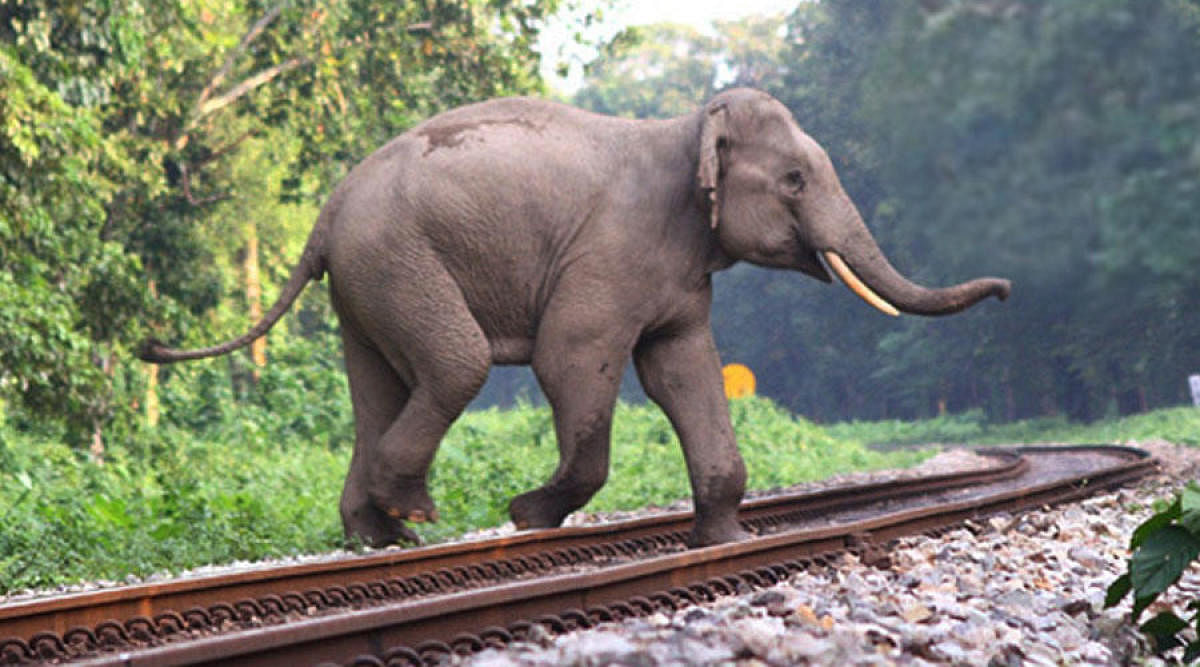
Habitat fragmentation is a reality across different landscapes and in the past three decades, the process of fragmentation has only intensified due to new linear infrastructure projects like railway lines, irrigation canals, power transmission lines, and fast moving national highways.
Asian elephants require larger areas of natural range than most other mammals in tropical parts of Asia. The wild population is constantly on the decline across different habitats and there is a tendency towards skewed sex ratio due to elimination of males for tusk from the populations.
During the last decade, there has been an increase in the intensity of human-elephant conflict in some parts of the country, like West Bengal, Assam, Odisha, Uttarakhand and Karnataka.
In Odisha alone, in the last nine years, around 694 elephant deaths have been reported, along with 664 human deaths caused by elephants.
In 2018-19, 91 elephant deaths were reported, whereas 92 human casualties were reported across the state.
The situation is serious in the northern and southern areas of West Bengal. Elephant deaths are reported at regular intervals due to accidents on railway lines and national highways in West Bengal and Jharkhand.
In Nagarhole and Bandipur National Parks of Karnataka, conflict is reported on a regular basis in areas with increased urbanisation or where development projects have fragmented the habitat.
The scenario in human enclaves situated in the heart of elephant landscapes is little different and there conflict is reported in the form of crop damage, damage to houses, plantation, etc.
The National Wildlife Action Plan 2017-31 released by the Government of India has recognised that wildlife conservation has to go beyond just the protected areas. This would allow ecosystem level conservation actions at the existing internal smaller, nested spatial scales of management such as protected areas (PAs) and territorial forest divisions as well as larger units to achieve conservation goals.
Landscape conservation
Landscape conservation of species must be seen as maintaining or enhancing genetic exchanges between metapopulations and improving the prospects of their long-term survival. The following actions have been recommended to ensure long-term management of wildlife species in the country:
Identify and set boundaries for key landscapes; identify corridors and describe land use, the ecological features and administrative units within the area.
Assess and evaluate status of all wildlife species and their habitats outside the Protected Areas but within the landscape for objective management planning. Endemic and endangered species in need of conservation should be targeted for special recovery projects.
Secure corridors for large mammals. Elephant and tiger corridors across the country have been identified in several reports of researchers and the Ministry of Environment, Forest and Climate Change. These corridors need to be demarcated on the ground and ecologically compatible land use needs to be ensured for these areas.
Develop a strategy for managing stray feral animals such as dogs, cats, etc., in and around wildlife habitats which threaten wildlife by attacking nests for eggs; control small wildlife; control the spread of pathogens like canine distemper virus.
Put in place institutional systems for objective assessment and consultation at project formulation stage to ensure that development projects as well as land-use practices in key wildlife habitats do not turn out to be drivers of conflict.
Develop and implement the ‘National Policy on Invasive Alien Species’ for both terrestrial and aquatic ecosystems to protect native biodiversity from the adverse impact of these species.
In most of the Protected Areas in the country, linear developments such as roads and highways, railway lines, power lines and canals are invariably in conflict with the objectives of wildlife management.
The increasing number of such development projects across the country have accentuated the fragmentation of landscapes, thus bringing about conflict between development projects and the objectives of wildlife conservation.
There is an urgent need to balance and harmonise development goals with objectives of long-term management of wildlife areas. A paradigm shift in management strategy is needed so as to ensure the long-term sustainable conservation of most wildlife species. A landscape conservation approach is key to the survival of mega species to maintain genetically viable populations. Tiger reserves in the country have already incorporated this in their management strategy by designating core and buffer zones and focusing on providing connectivity through viable corridors.
Linear projects
Wide ranging species like elephants require contiguous habitats across landscapes. Linear developments in their landscape inside and outside protected areas pose a major challenge for elephant conservation.
There is a need for development and conservation to go hand-in-hand, keeping in view the need to meet the development and conservation goals of the nation.
Protected areas in India often have development projects like roads, railway lines, irrigation canals and transmission lines that fragment the habitats, often causing mortality of animals and posing a serious challenge to their long-term conservation.
Some prominent examples include the National Highway (NH) crossing Rajaji National Park in Uttarakhand; NH67 and 212 passing through Bandipur National Park in Karnataka; the highway through Pench Tiger Reserve in Madhya Pradesh; NH209 that divides Sathyamangalam Wildlife Landscape in Tamil Nadu; State Highways passing through Gir National Park, Gujarat, and Sariska National Park in Rajasthan; NH37 through Kaziranga National Park and NH54 passing through Borail Wildlife Sanctuary in Assam; the Poily-Ranjitpura road passing through Jambughoda Wildlife Sanctuary in Gujarat.
In view of this, there is a need to integrate conservation concerns in the development of infrastructure during the planning process itself.
Infrastructural development is required to be animal friendly to ensure safe movement of animals. Such development would be required to be ‘green’ towards linear infrastructure so as to minimise their impact on habitats. This can be successfully accomplished with the involvement of the communities and building a consensus between conservation priorities and economic development.
(Excerpted from Jumbos on the Edge: The Future of Elephant Conservation in India published by Nataraj Publishers)